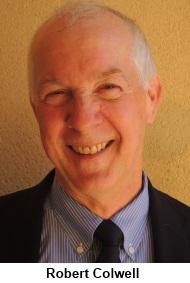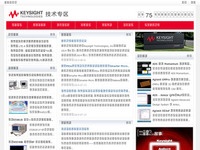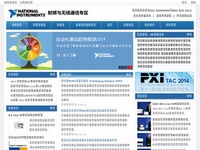在日前举行的“Hot Chips”大会上,发表专题演讲的专家指出,摩尔定律--相同面积的晶圆上所容纳的晶体管数每两年增加一倍,到2020年会达到7纳米节点,之后便会失效。
虽然业界有很多人都预测摩尔定律将走向终结,但很少有人能够提出深入且具说服力的解释。随着光刻技术进展停滞不前以及加工技术逐渐面临原子极限,业界的种种预测也越来越多。
“对于时程的规划,我认为2020年将会是摩尔定律终结的最早日期。”美国国防部先进研究计划署(DARPA)微系统技术办公室总监罗伯特•考威尔(Robert Colwell)表示,“你或许会说是2022年,但无论是发生在7纳米或5纳米节点时,它都是个大问题。”Robert Colwell曾是负责英特尔“奔腾”处理器设计团队的工程师。

过去三十年里,摩尔定律持续呈指数级增长,速度从1MHz提升到5GHz,增加了大约3,500倍。相比之下,智能构架同期才提升了50倍左右,他指出。
指数级增长的终结通常由于本身无法持续自然地进展。Colwell表示,遗憾的是,这样的机会并不多见。
“我并不指望未来30年还能在电子产业看到另一个3,500倍的速度提升,50倍还是有可能的。”Colwell表示,“我认为区区年平均10%的增长不足以创造理想的利润空间。”
对于很多人还盲目地相信工程师们将会找到另一个指数级增长曲线以取代摩尔定律,Colwell给他们泼了盆冷水,他说“我们或许能进行一大堆的调整,但却无法解决指数级的损失。”
DARPA列出了多达30种可能取代摩尔定律主流CMOS 技术的替代方案。Colwell说,“我个人认为其中有两、三种有前景的方案,但却都不被看好。”
DARPA的微系统部门有两个资金充分的计划。一个是探索近似计算的计划,称之为“Upside”;另一个是探索自旋力矩振荡器的影响,以解决部分方案在相对较低功耗时所遇到的问题。
Colwell还列出可改善芯片后CMOS技术的其它方式,包括3D堆叠、新架构与应用程序、新的开关技术、更好的人机介面,以及简单的创意营销等。
Colwell提出了几种详细方案。另外,Colwell指出“针对人机介面优化还有大量工作要做,能找到更好互动方式的人就能取得成功。”
随着摩尔定律逐渐接近尾声,他表示,“如果摩尔定律终结了,那也会是由于经济原因,而不是物理原因,所以看紧你的钱包吧!”
也就是说,推动芯片持续向前进展的新机会将会出现,因此,工程师们必须“随时改变设计思维,但同时也规划未来,因为一切已不太遥远了,”他说。
来源:eetimes
英文原文:
Moore's Law Dead by 2022, Expert Says
Moore's Law -- the ability to pack twice as many transistors on the same sliver of silicon every two years -- will come to an end as soon as 2020 at the 7nm node, said a keynoter at the Hot Chips conference here.
While many have predicted the end of Moore's Law, few have done it so passionately or convincingly. The predictions are increasing as lithography advances stall and process technology approaches atomic limits.
"For planning horizons, I pick 2020 as the earliest date we could call it dead," said Robert Colwell, who seeks follow-on technologies as director of the microsystems group at the Defense Advanced Research Projects Agency. "You could talk me into 2022, but whether it will come at 7 or 5nm, it's a big deal," said the engineer who once managed a Pentium-class processor design at Intel.
Moore's Law was a rare exponential growth factor that over 30 years brought speed boosts from 1 MHz to 5 GHz, a 3,500-fold increase. By contrast, the best advances in clever architectures delivered about 50x increases over the same period, he said.
Exponentials always come to an end by the very nature of their unsustainably heady growth. Unfortunately, such rides are rare, Colwell said.
"I don't expect to see another 3,500x increase in electronics -- maybe 50x in the next 30 years," he said. Unfortunately, "I don't think the world's going to give us a lot of extra money for 10 percent [annual] benefit increases," he told an audience of processor designers.
Colwell poured cold water on blind faith that engineers will find another exponential growth curve to replace Moore's Law. "We will make a bunch of incremental tweaks, but you can't fix the loss of an exponential," he said.
DARPA tracks a list of as many as 30 possible alternatives to the CMOS technology that has been the workhorse of Moore's Law. "My personal take is there are two or three promising ones and they are not very promising," he said.
DARPA's microsystems group has "a fair amount of money chasing" two programs. One is exploring approximate computing in a program called Upside; another is exploring the effects of spin-torque oscillators to settle on partial solutions at relatively low power.
Colwell ticked off a list of other routes to improving chips post-CMOS, including 3D stacking, new architectures and apps, new switching technologies, better human interfaces, and just plain creative marketing. "You laugh, but you will see this," he said, citing Intel's dolls of fab workers.
Colwell called out a few specifics, such as work building devices at the level of a hundred to a thousand atoms. In addition, "there's a lot of work in brain-machine interfacing -- people who figure out better interfaces will win," he said.
As the end approaches, "when Moore's Law stops it will be economics that stops it, not physics, so keep your eye on the money," he said.
That said, new opportunities will emerge to nudge chips forward, so engineers need to "keep designing our heads off, but at the same time plan for the future because it's not that far off," he said.





